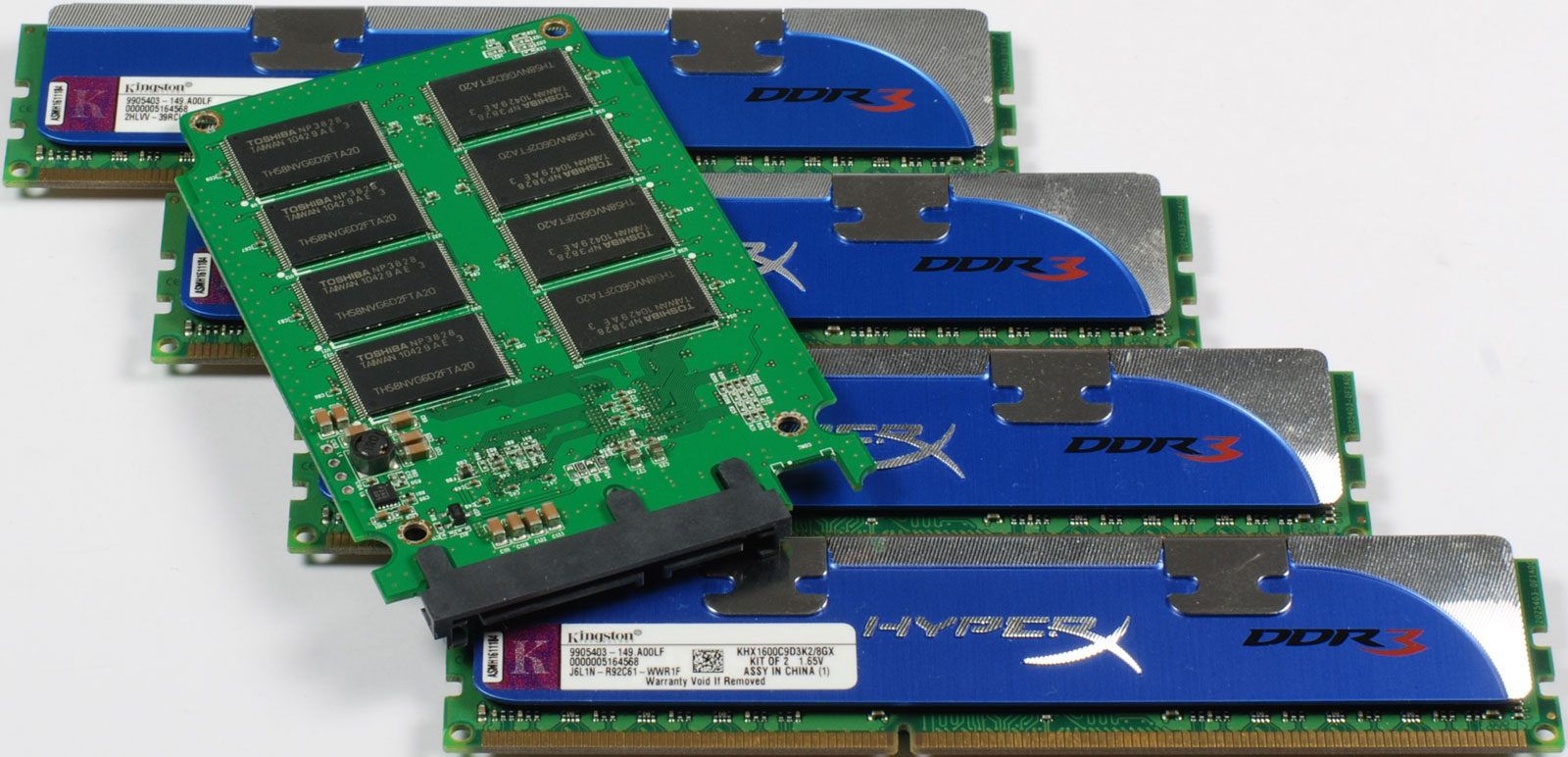Experiment: Can Adding RAM Improve Your SSD's Endurance?
A minor hardware upgrade can have a major impact. Adding RAM to your PC may help cut back on writes to your SSD, potentially increasing its lifespan. In fact, our benchmarks reveal up to a 63% reduction with 16 GB of DDR3 memory compared to 4 GB.
Can You Get More Speed From Your SSD By Adding RAM?
There are a number of different hardware upgrades capable of speeding up an aging PC. A new processor does the trick, though many times that turns into a new motherboard, new memory, and often a new power supply, too. An add-in graphics card is often the answer, particularly if you're a gamer. But two of the easiest and most effective purchases are an SSD and more system memory.
Switching over from a mechanical disk to solid-state storage is probably the most effective way to really feel your system get faster. However, adding RAM can also cut down on boot-up time, make applications start faster, and keep more programs open at a time without a big performance hit. The ability to fit more data into memory means your CPU will make fewer trips out to the slower tier of user storage for the information it needs.

But what if your machine already boasts an SSD? Will adding RAM still help, accelerating it further? Or can you save the cost and sink it into a higher-end GPU down the road? How much does more memory affect write operations? We're taking a closer look at those questions by repeatedly running our benchmark suite on an SSD-equipped machine, while varying the amount of RAM installed.
The result took us by surprise. In essence, there is no such thing as too much memory in a desktop with solid-state storage. The more RAM you add, the better off endurance looks, and the more I/O performance you get from the storage subsystem.
Get Tom's Hardware's best news and in-depth reviews, straight to your inbox.
Current page: Can You Get More Speed From Your SSD By Adding RAM?
Next Page Test System And Benchmarks-
lunyone How is RAM at "Historic Lows"?? RAM in 2012 was about half the price today. I bought 32 gb's of RAM in late 2012 for $100 on sale. Today it's about >$200 for similar set.Reply -
jimmysmitty Reply11135305 said:How is RAM at "Historic Lows"?? RAM in 2012 was about half the price today. I bought 32 gb's of RAM in late 2012 for $100 on sale. Today it's about >$200 for similar set.
Considering that 4GB of DDR2 used to cost ($250) you can easily get 32GB of DDR3. And it will go down again with DDR4 since DDR4 should have 16GB sticks in mass. -
CommentariesAnd More I did feel the difference when I added 8GB RAM to my rig. It was in my pocket , not the SSD though. :PReply -
agnickolov I've happily been running with 12GB for over 2 1/2 years now, upgraded from initially only 6GB. I probably won't be going for 24GB though, since my system is rather old running an i7-920. However, 16GB or maybe even 32GB is definitely in the cards for the next build. If only Intel were to release a CPU worth upgrading to, 4.5 years later the current Haswell i7s are not even twice faster...Reply -
rdc85 IMO more test needed to see better picture, like test when gaming, light browsing office, watching movie, etc..Reply
I think the test in this article all high memory usage apps, the average reduction of disk write may be lower/none in light workload...
And also what the effect if the page/swap files is moved to hdd (not in the ssd) in some computer configuration (like mine).... -
lunyone Reply
How does this relate to my statement? I know RAM was expensive when they first came out, but over the last 6-8 months time frame RAM has more than doubled in price, so your point is just moot as far as this article is concerned, IMHO.11135315 said:11135305 said:How is RAM at "Historic Lows"?? RAM in 2012 was about half the price today. I bought 32 gb's of RAM in late 2012 for $100 on sale. Today it's about >$200 for similar set.
Considering that 4GB of DDR2 used to cost ($250) you can easily get 32GB of DDR3. And it will go down again with DDR4 since DDR4 should have 16GB sticks in mass.
-
Soma42 Is this not just reflecting the reduction of the page file? I would think that by reducing the page file down to a minimum size you would achieve the same effect. You can probably turn it off at 16GB ram, maybe even at 8GB and really increase your SSD life.Reply -
vinhn Yeah, last year, 2x4GB RAM were around ~$45, not it is ~$70. Not that I am complaining, it is low but not historic low.Reply -
smeezekitty I don't suggest putting your swap file on your SSD. It will eat up the write cycles as well as valuable gigabytes.Reply
Put it on your data drive instead. Although it is slower if you have enough RAM it won't be a problem.